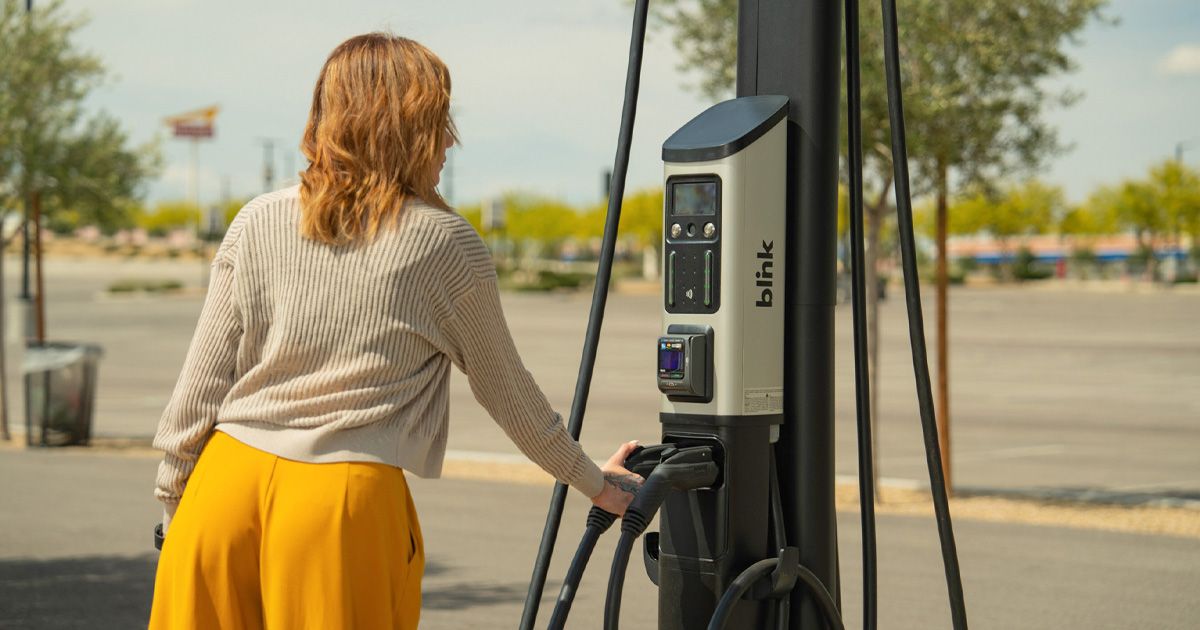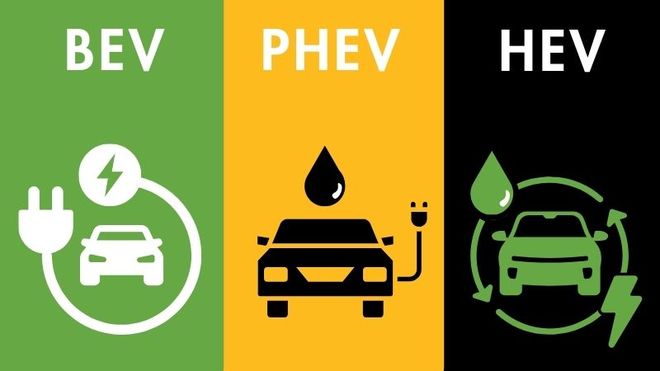BEV (Battery Electric Vehicle): Fully electric, powered only by a battery. No gas engine.
PHEV (Plug-in Hybrid Electric Vehicle): Combines a battery-powered motor with a gas engine. It can be charged and run on electricity for short distances.
HEV (Hybrid Electric Vehicle): Uses both gas and electric power, but cannot be plugged in. The battery charges through regenerative braking.
EV Driver 101
A quick guide to electric vehicle charging.

Where to Start
Welcome to EV101! This is your starting point to learn the basics about electric vehicles. Explore the page, follow the links, and get up to speed on everything you need to know.
Types of Electric Vehicles

Types of Connectors
Level 2 (Home/Work Charging): Most electric cars in the US use the J1772 plug. It’s simple, reliable, and works with almost all Level 2 chargers.
Level 3 (DC Fast Charging): For fast charging on the road Level 3 stations often support CCS or CHAdeMO connectors. Many EVs can use these fast chargers with adapters, making long-distance travel easier and more convenient.

EV Charging Levels Explained
Level 1 Charging
Uses a standard 120-volt outlet.
Adds about 3-5 miles of range per hour.
Ideal for overnight electric vehicle charging or as a convenient option for Plug-In Hybrid EVs (PHEV) using portable EV chargers.
Level 2 Charging
Requires a 240-volt EV charging outlet or an installed unit.
Delivers 20-40 miles of range per hour.
Commonly employs J1772 charging stations and other widespread electric vehicle supply equipment (EVSE).
Suited for homes, workplaces, and shared parking areas.
Level 3 Charging (DC Fast Charging)
Known as rapid charger for electric cars, Level 3 EV charger, or DC fast charger.
Can charge an EV battery up to 80% charge in just 30–60 minutes.
Ideal for road trips, commercial fleets, and drivers who need rapid electric vehicle charging on the go.
Blink offers a nationwide network of Level 3 electric car chargers.

Let’s talk charging!
Find quick answers to common questions about how and where to charge your EV — from home charging to public stations, connectors, costs, and everything in between.
Electric vehicle (EV) charging is the process of supplying electricity to an electric car’s battery through a dedicated outlet, charging station, or portable EV charger. In simple terms, EV charging is like refueling—but with electricity instead of gasoline.
For new EV owners, the first question often is, “What is EV charging and how does it work?” At its core, EV charging transfers energy from the grid into your vehicle through an electric vehicle plug. The time it takes depends on the type of EV charger you use—Level 1, Level 2, or Level 3—ranging from several hours to just minutes.
When you connect your vehicle to a charging station for electric cars, electricity flows through an EV charger plug into your car’s electric car charging port. The vehicle’s onboard system then automatically regulates charging speed, safety, and the amount of energy the battery can accept.
At home: Many drivers begin with a standard household outlet for electric car charging at home, but upgrading to a Level 2 wall charger makes charging much faster and more convenient.
On the go: Public Level 3 charging stations —also known as DC fast chargers—transfer energy at high speed, adding hundreds of miles of driving range in less than an hour.
For most drivers, charging electric cars at home is the most convenient and cost-effective option. If you’re wondering how to charge an electric car at home, here are the main options:
Use a standard outlet (Level 1): Plugging into a regular 120-volt household outlet is the simplest way to get started. While slow, it works well for overnight charging or for drivers with shorter daily commutes.
Upgrade to a Level 2 wall charger: A 240-volt wall unit dramatically reduces charging time, delivering 3–7 times faster results. This is the preferred choice for most EV owners.
Consider portable EV chargers: for added flexibility, portable EV chargers let you charge at different locations, so you’re not limited to one charging point.
Cost considerations:
How much is an electric car charging station? Residential units typically range between $500–$1,500, plus installation.
Looking for professional setup? Check out Blink’s turnkey installation services.
When you’re on the road, Blink’s network of of public EV charging stations for electric vehicles provides reliability and speed to keep you moving.
Level 2 chargers are commonly found in shopping centers, office buildings, and parking garages.
Level 3 charging stations (DC Fast Chargers) offer fast charging for long-distance charging, helping you get back on the road quickly.
Blink integrates advanced EV charger software for seamless payments, usage tracking, and remote station management.
Are Electric Car Chargers Universal — and Can You Charge at Any Public Station?
Most public charging stations support the major connector types, but not all chargers are universal:
Most EVs use the J1772 plug for Level 2 charging, which is widely supported across public networks.
Level 3 chargers often support CCS or CHAdeMO connectors, with adapters typically available.
Tesla vehicles use proprietary connectors but can access other networks using adapters.
So yes, most EVs can charge at public stations, as long as the connector matches, or an adapter is available.
Want to estimate your EV’s charging time? Follow these steps:
Note your battery’s capacity in kWh.
Check your charger’s power output (usually listed in kW).
Use this formula: Battery Capacity (kWh) ÷ Charger Power (kW) = Estimated Charging Time
Or find out how long it takes to charge your EV using our easy-to-use Blink EV Charging Time Calculator.
How much does a charging station cost?
Home units: $500–$1,500 (plus installation).
Public charging: Pay-per-use or subscription.
How much are Tesla charging stations?
Tesla home chargers usually cost between $400–$600.
How much is an EV charging station for businesses?
Commercial setups vary widely. Blink offers solutions for fleets and municipalities.
Installing the right charger optimally ensures safety and efficiency.
Search for EV charger installation near me—Blink provides turnkey installation.
Learn best practices via Blink’s construction resources for EVSE installation.
Advanced EV charger software enables features like energy monitoring and fleet management
EV Tips: Charging Options Based on Your Lifestyle
Home Charging
Best for: Overnight convenience and daily use.
Workplace Charging
Vehicles parked during work hours.
Public Charging Networks
Long-distance travel with fast Level 3 chargers.
Portable EV Chargers
Flexibility while traveling or staying overnight.
How does an EV work?
Curious about electric vehicles? Learn how an EV works, the differences between EVs, PHEVs, and BEVs, and why driving electric makes sense for your wallet and the planet.
EV Glossary: EV Charging Terms Made Simple
New to EVs or just want to brush up on the EV vocabulary? Blink Charging’s glossary breaks down the most essential EV charging terms—from voltage and connectors to charging levels and energy flow. It’s your go-to resource for understanding the tech behind the plug.
EV Charging Tools
Explore our interactive EV tools, including a station map to find chargers near you and a cost calculator to estimate charging expenses—making it easy to plan your EV journey with confidence.

Find a Charging Station Near You
Quick Takeaways
Get the key points at a glance with these quick takeaways.
What is an EV charger?
The device that supplies electricity to your vehicle.
EV charging levels
From Level 1 home charging to ultra-fast Level 3 car chargers.
Home Charging
Convenient and cost-effective for daily use.
Public charging stations
Found in parking lots, malls, highways—accessible via apps.
Charging time varies
Depends on battery size, charger type, and current charge level.
Connector types matter
J1772, CCS, CHAdeMO, Tesla—know what your EV supports.
Articles From our Blog
Explore tips, guides, and insights from our blog to help you get the most out of your EV driving experience.
